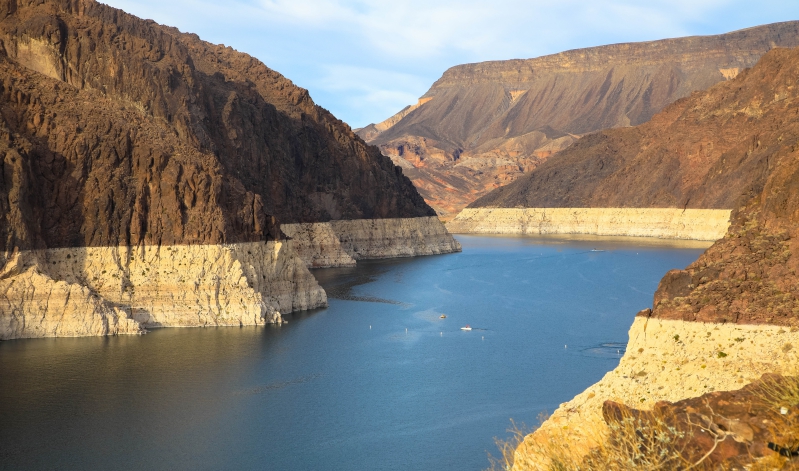
Experts discuss surface water rights in the United States.
Where does your water come from?
70 percent of fresh water consumed in the United States comes from surface water—water from sources such as rivers, lakes, and reservoirs.
In the United States, surface water regulatory structures vary according to region. Eastern states tend to follow the “riparian doctrine,” which grants rights of reasonable use to those who own land adjacent to a body of water. Western states primarily follow the doctrine of “prior appropriation.” The prior appropriation doctrine grants water rights to the first person to use the water source. The right to the water continues as long as the appropriator, or person with the water right, puts the water to beneficial uses, such as for drinking water, irrigation, or recreation.
“Federal reserved water rights” give Indigenous people the right to withdraw enough water to enable their self-sufficiency, but tribes have been continually denied full access to this right. Claims to realize Indigenous water rights under federal reserved water rights can take decades to resolve. According to the Water & Tribes Initiative, Indigenous people hold rights to about 20 percent of water in the Colorado River Basin.
But the Colorado River Basin, and many other vital sources of water, are shrinking. Decreased precipitation and snowmelt and overuse of water lead to water shortages. Extended drought in turn leads to threatened fish populations, reduced incomes for impacted businesses, increased wildfire risk, higher instances of heat stroke, and even loss of human life. In 2021, the U.S. Bureau of Reclamation declared the first-ever water shortage from the Colorado River.
Water shortages trigger federally mandated reductions in water withdrawal limits. In the Colorado River Basin, seven states, Indigenous people, and Mexican government officials negotiated how the reductions would be allocated. Farmers left fields unplanted as Arizona lost around 8 percent of its total water supply.
In the coming years, scientists expect water shortages to worsen as warmer climates cause heatwaves and droughts. The regulation of water rights will determine the accessibility of water for millions of people.
This week’s Saturday Seminar explores regulatory options for more equitable allocation of water rights.
- Water ultimately belongs to the public, argues Duane Rudolph of China’s Peking University School of Transnational Law in an article published in the Michigan State Law Review. Rudolph explains that private water rights are “usufructuary,” meaning they convey a right to individuals to use the water. The actual ownership of the water, however, remains with the public. Relying on these concepts, Rudolph argues that public values should overrule private water rights during environmental emergencies such as droughts. In states prone to droughts, such as California, he suggests codifying the public ownership of water in the state constitution to avoid legal challenges to emergency regulations.
- In times of extreme drought, the prior appropriation doctrine does not guarantee an allocation of water rights that best reflects public health priorities, argues Robin Craig of the USC Gould School of Law in an article in Texas A&M Law Review. Craig advocates the introduction of a doctrine of “public necessity,” under which courts would recognize an exception to the prior appropriation doctrine by requiring private water rights holders to surrender their shares for public needs in times of emergency. Craig argues that a public necessity policy could remedy the inequities of strict prior appropriation rules.
- In an article in Natural Resources Journal, author Michelle Bryan of the Alexander Blewett III School of Law argues that the prior appropriation doctrine fails to account for the sacred value that water has in Indigenous cultures. Bryan explains that through ceremonial purposes, spiritual practices, and locational significance, water can become an integrated part of Indigenous cultures. Bryan argues that prior appropriation contains bias towards water uses that vastly differ from sacred tribal uses, such as maximizing economic benefits through activities such as mining and livestock watering. Bryan recommends that federal environmental review and state mitigation requirements require a consideration of impacts on sacred tribal waters and advocates meaningful tribal consultation as an enforceable legal right.
- In a chapter published in the book Environmental Law, Disrupted, Vanessa Casado Pérez of Texas A&M University School of Law argues that large water transactions strain existing water market regulations, which fail to account for community externalities such as the loss of water and of agricultural jobs. Forthcoming regulations, she suggests, should seek to ensure that communities do not lose water resources to powerful corporations. Casado Pérez offers 11 ways in which the current water transaction regime could incorporate community externalities, many of which center around granting the public greater decision-making power in water transactions.
- Although Indigenous water rights are recognized in comparative and international law, western state law generally fails to provide substantive and procedural water rights to Indigenous peoples, explains Elizabeth Macpherson. In the foreword to the University of Canterbury School of Law’s symposium entitled Indigenous Water Rights in Comparative Law, Macpherson highlights the need to reform settler-colonial state law and respect Indigenous beliefs concerning water rights. Specifically, Macpherson argues that both constitutional and comparative water law should be supported by policies that involve “a genuine co-design and co-management approach which does not obscure Indigenous perspectives, rights, and tenures.”
- In an article published in WIREs Water, Robin Craig argues that, in the context of climate change, further scholarship must address eastern riparian water rights. Craig explains that the eastern United States has begun to experience water scarcity and drought due to climate change. Craig argues that riparian laws do not create the legal structure necessary for addressing drought because they do not contain established processes to allocate water usage in times of shortage. Craig compiles arguments from scholars who recommend that eastern states increase water storage capacity through technological innovations.
The Saturday Seminar is a weekly feature that aims to put into written form the kind of content that would be conveyed in a live seminar involving regulatory experts. Each week, The Regulatory Review publishes a brief overview of a selected regulatory topic and then distills recent research and scholarly writing on that topic.



